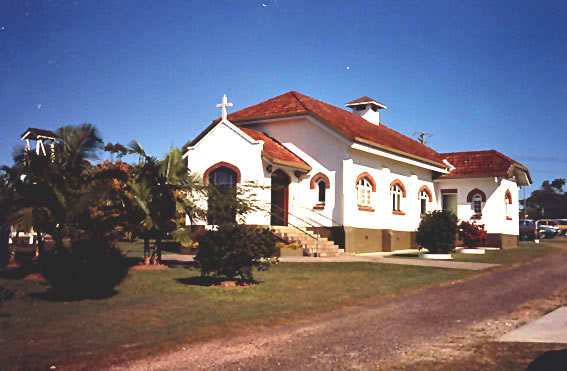
Bethesda Lutheran Church, Beenleigh
[Photograph by Howard Baker (1990s)]

Bethesda Lutheran Church, Beenleigh
[Photograph by Howard Baker (1990s)]
Historical and Technical Documentation by Geoffrey Cox
© OHTA 2011, 2014 (last updated October 2014)
Beenleigh is situated in the Logan River Valley, where it became the administrative centre for the district late in the nineteenth century. European settlement in the district began with German Lutheran farmers at Bethania in 1864. The Beenleigh Lutheran congregation seceded from an earlier Lutheran congregation in the area in 1883, and established themselves on the present site by purchasing the Good Templar's Hall, which they repaired and dedicated as St Peter's Church in 1884. The parish was host to the first Convention of the General Synod of the United Evangelical Lutheran Church in Australia upon its formation in 1925.1 The foundation stone of the present church building was laid in 1947. Following the amalgamation of three congregations in the Beenleigh area in 1990, a new congregation was formed and St Peter's was re-named Bethesda Lutheran Church.2
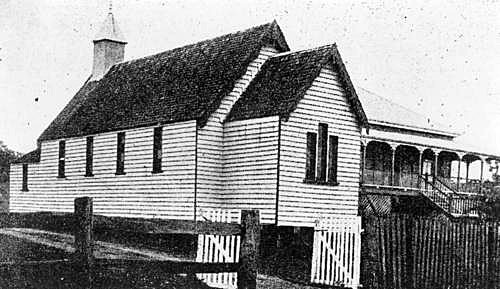
The Lutheran Church, Beenleigh, c.1912
[Photograph: John Oxley Library, State Library of Queensland]

The foundation stone of the present church
[Photograph by Geoffrey Cox (September 2014)]
A new organ is reported to have been installed in this church around 1903, presumably a harmonium.3 In later years, an electronic 'spinet organ' was used.4
The present organ was built in 1983 by Knud Smenge of Melbourne. Smenge had arrived in Australia in January 1979 to work with George Fincham & Sons in Melbourne, but remained with Finchams for only two years before founding his own firm in January 1981. The Beenleigh organ was his first instrument in Queensland, as well as his first two-manual organ after 1981.5 It is typical of Smenge's instruments in its adherence to the principles of the Orgelbewegung, reflecting his training and experience with the Danish firms of Marcussen and Christensen in the 1960s and 1970s.
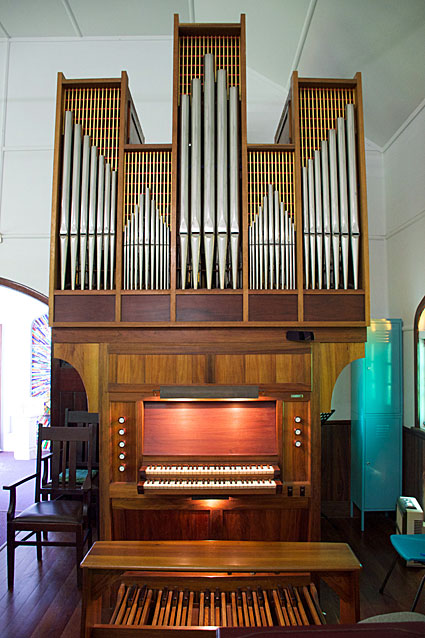
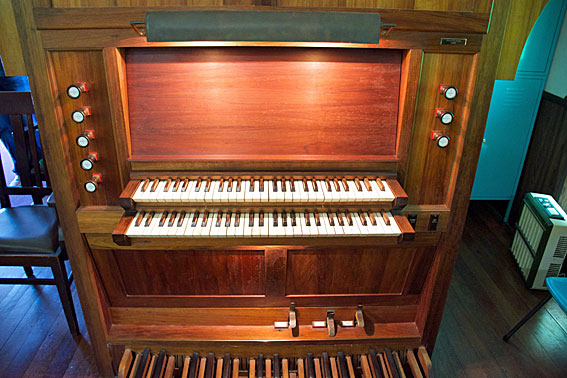
The 1983 Knud Smenge organ
[Photographs by Rodney Ford (September 2014)]
The casework and bench are of solid blackwood. The keyboards have bone naturals and rosewood sharps, while the pedals are of solid oak.6
| MANUAL I Spitzflute Principal Waldflute Mixture MANUAL II Gedact Rohrflute Principal PEDAL Subbas COUPLERS II-I I-Ped II-Ped |
8 4 2 II 8 4 2 16 |
(50% tin) (bottom octave from Gedact) (75% tin) (façade) (33% tin) (50% tin) (bottom octave wood; tenor C to top G 33% tin) (33% tin) (50% tin) (bottom octave wood; Middle C-F 33% tin) |
Draw-stop console
Mechanical action
Compass: 56/30
Pedalboard: Straight and concave.7
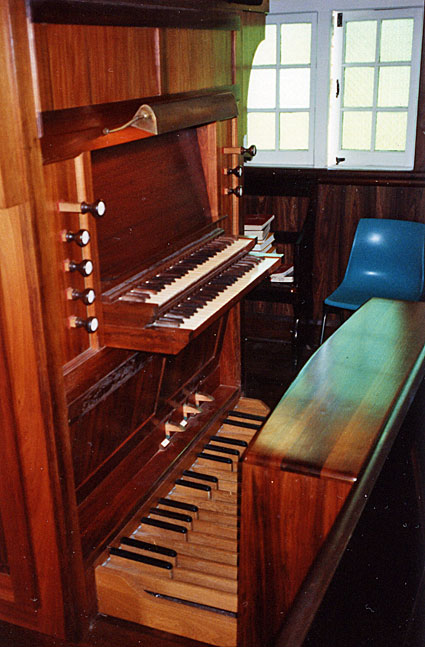
Console of the 1983 Knud Smenge organ
[Photograph by Howard Baker (1990s)]
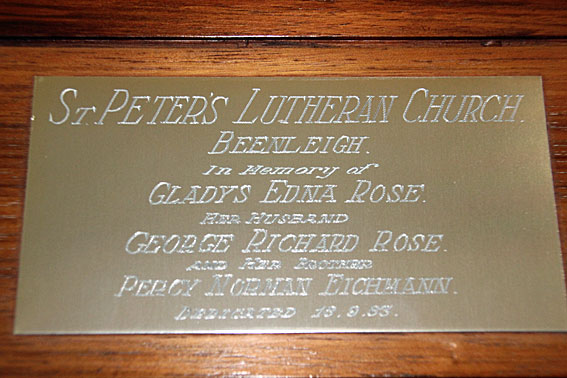
Dedication Plaque on the organ
[Photograph by Steven Nisbet (September 2013)
__________________________________________________________________________
1 F. Otto Theile, One Hundred Years of the Lutheran Church in Queensland (Brisbane: UELCA, 1938), pp. 172-74.
2 Keith Schmidt & Nevan and Annette Janetzki, Bethesda Lutheran Church, Beenleigh: Laying of the Foundation Stone, 1947-1997 (Anniversary booklet, [church] 1997), cited by Pastor Mark Hampel, August 2011.
3 Thiele, op. cit., p. 174.
4 John Davidson, 'St Peter's Lutheran Church, Beenleigh,' Organ Society of Queensland Newsletter, vol. 16, no. 3 (December 1988), pp. 4-8.
5 David Kinsela, 'The Organ at Newington College, Sydney,' Victorian Organ Journal (October 1985), pp. 3-12; list of organs by Smenge in Victorian Organ Journal (December 1985), p. 13.
6 Details noted from the builder's contract by Ross Salomon (organist), September 2014.
7 Specification noted by G. Cox, 1983, with details noted from the builder's contract by Ross Salomon (organist), September 2014.